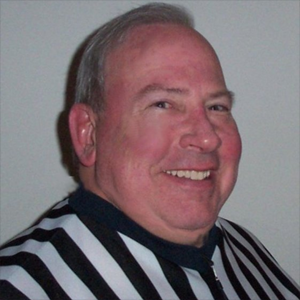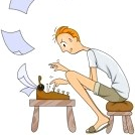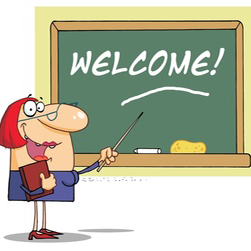
Rndballref
20 Years Experience
Chicago, IL
Male, 60
For twenty years I officiated high school, AAU and park district basketball games, retiring recently. For a few officiating is the focus of their occupation, while for most working as an umpire or basketball referee is an avocation. I started ref'ing to earn beer money during college, but it became a great way to stay connected to the best sports game in the universe. As a spinoff, I wrote a sports-thriller novel loosely based on my referee experiences titled, Advantage Disadvantage
A jumper can step into the jump but any other player cannot until the ball is tapped.
When I umped little league baseball, there were times when I admonished a player directly - most often a pitcher for disrespectful body language in protest (slamming his mitt after a call four call, shaking his head purposefully when not getting a strike called, etc). Depending on how grievous the infraction determined my intensity.
One time while umping a 14 year old tournament game a pitcher was trying to get strike calls for balls 2 inches off the plate. After watching his demonstrations a few times, I stopped the game and took three paces toward the mound. I said loud enough for all to hear, "pitcher, you are not as good as Greg Maddox and I will not give in to your pitches off the plate. I suggest you challenge the hitters with strikes, or at least stop your sophomoric demonstrations. Or I can solve this for you and throw you out of the game". The coach came out to talk to me and instead of protesting he thanked me for humbling this young man.
In general, in basketball no good comes from arguing or negatively interacting with the crowd or the players. Mature refs avoid this.
Yes in NFHS rules a shooter can retrieve his own airball as long as it was deemed a legitimate shot.
OK. So let's say the shooter comes down from his jump shot and touches the floor and the shot is in the air. This offensive player is no longer an "airborne shooter". If the defense then fouls this ex-airborne shooter, or any other offensive player while the ball is in the air here is how you administer it:
Count the basket if it goes in. Then administer the foul (one and one, or two if in bonus situations.NOTE: If the shooter is still an airborne shooter and is fouled, he is awarded one free throw if the ball goes in, two or three if the shot is no good.
"The Onion" Contributors
 What's your favorite Onion headline of all time?
What's your favorite Onion headline of all time?
Professor
 How do you prevent cheating and plagiarism these days?
How do you prevent cheating and plagiarism these days?
Programmer
 Why are so many developers such bad communicators?
Why are so many developers such bad communicators?
The ref should extend his arm sraight from the shoulder indicating a delayed call. If the free throw goes in, ignore the violation. If the free throw does not go in , then reshoot the free throw.
Yes. The ref is part of the floor where he is standing. If the ref is out of bounds and the ball hits him then the ball is out of bounds. If the ref is inbounds and the ball hits him play on.
The first time you slap him, I pass. The second time I call a foul even if there is no change in advantage because 1) you INTEND to get an advantage, and 2) if you are allowed to slap the player you are going to get punched and the game will deteriate. A good referee has each foul in context....you wouldn't last too long if I officiated your game and you started slapping players hands.
-OR-
 Login with Facebook
Login with Facebook (max 20 characters - letters, numbers, and underscores only. Note that your username is private, and you have the option to choose an alias when asking questions or hosting a Q&A.)
(A valid e-mail address is required. Your e-mail will not be shared with anyone.)
(min 5 characters)
By checking this box, you acknowledge that you have read and agree to Jobstr.com’s Terms and Privacy Policy.
-OR-
 Register with Facebook
Register with Facebook(Don't worry: you'll be able to choose an alias when asking questions or hosting a Q&A.)